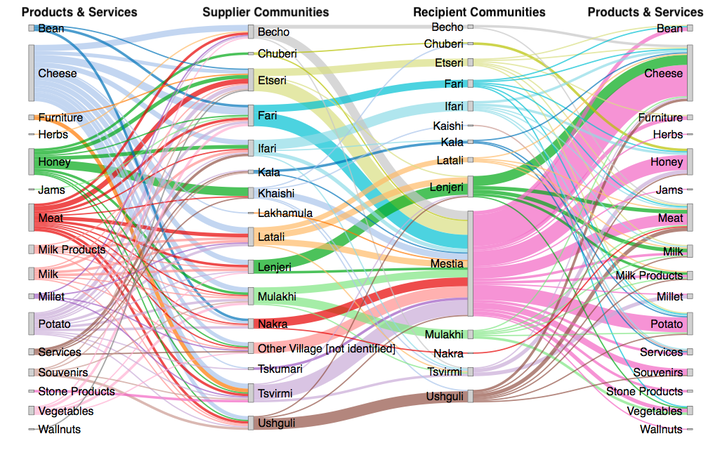Spatial Peculiarities of Local Tourism Supply Chains in High-Mountainous Georgia - Challenges and Perspectives
 Sankey Diagram by Temur Gugushvili
Sankey Diagram by Temur Gugushvili
Abstract
The primary aim of this article is to study the spatial peculiarities of the integration process of the community-driven economic activities within a local tourism supply chain. To achieve this, mainstream approaches were synthesized with the traditional methods of collecting and analyzing data. More precisely, a qualitative study was carried out in various communities of Mestia Municipality in Georgia. The research methods for data collection combined in-depth interviews with local households and focused interviews with representatives of the tourism industry. The empirical data was analyzed on the basis of a seven-step thematic analysis method processed through qualitative data analysis software (MAXQDA). A Qualitative GIS concept was also applied to reveal primary trends and challenges, finally illustrating the spatial peculiarities of the analyzed tourism supply chain. Ultimately, the presented article identifies the main actors in the local tourism supply chain and examines its functioning in the spatial context of Mestia Municipality. The study disclosed the geographical divisions of various settlements and their supply interlinkages.